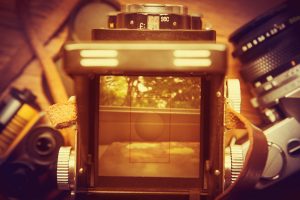How Shutter Speed and ISO Can Make or Break Your Photography

Balance is a key component of successful photography.
Picture this: shutter speed and ISO are two different entities on opposite sides of a seesaw. If you put more attention towards shutter speed, the seesaw will become lopsided. Same applies if you put more attention on ISO. These two components of photography must work together to balance each other out to produce a great photo.
Let’s quickly go over the definitions of both components:
Shutter speed is the speed at which the camera shutter closes. A faster speed will result in less light gathered, a slower speed will result in more light gathered. This is a rather simple concept that becomes more complicated once you add the other component, ISO.
ISO measures the light sensitivity of the digital camera sensor (as for older film cameras, it measure the light sensitivity of the film itself). A lower ISO will make the camera less sensitive to light, resulting in a low-level of grain. The obverse is true about a higher ISO: higher sensitivity and higher grain will result.
As you can see, both components of photography do similar tasks in different ways. How do you achieve this balance? Granted, many professional cameras these days will attempt to balance shutter speed and ISO for you, but they often get it wrong. It is important to understand the balance personally so that you can override your camera when it makes a mistake, or to even use manual mode.

Here are a couple of tips:
- Set your ISO high enough to achieve a shutter speed of 1/250 or greater in normal conditions, if handheld. This will help reduce camera shake. One exception to this rule is if you have a tripod and want as little grain as possible.
- For night shots, a high ISO and a slow shutter speed will grab all available light and reproduce the scene accurately, if not brighter.
- Know the capabilities of your camera. Each camera is different; higher-end professional cameras can handle higher ISO’s without too much grain. This gives you the freedom to increase the ISO to get faster shutter speeds for handheld use. Conversely, older cameras may require you to stay below a certain ISO threshold to maintain an optimal level of grain. You will then be required to either use a tripod or an artificial form of light.

As you can see, there are many possibilities with shutter speed and iso settings. Now that you have learned common balance techniques you can adjust settings on the fly and be more prepared for a variety of situations. There is also great freedom in the world of photography; it is essential to experiment and see what works for you.
Feel free to contact us for help with your photography needs.
Leave a Reply